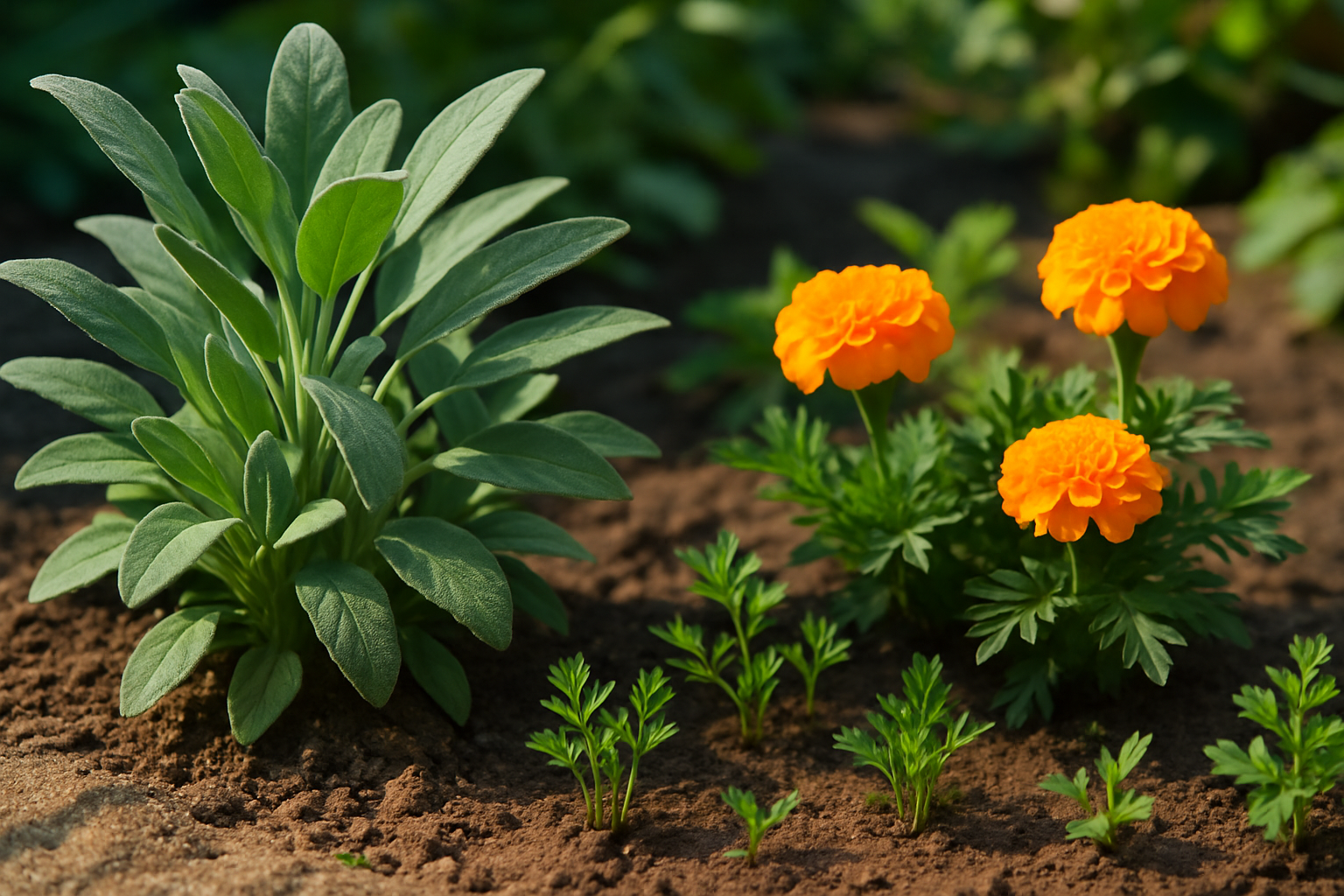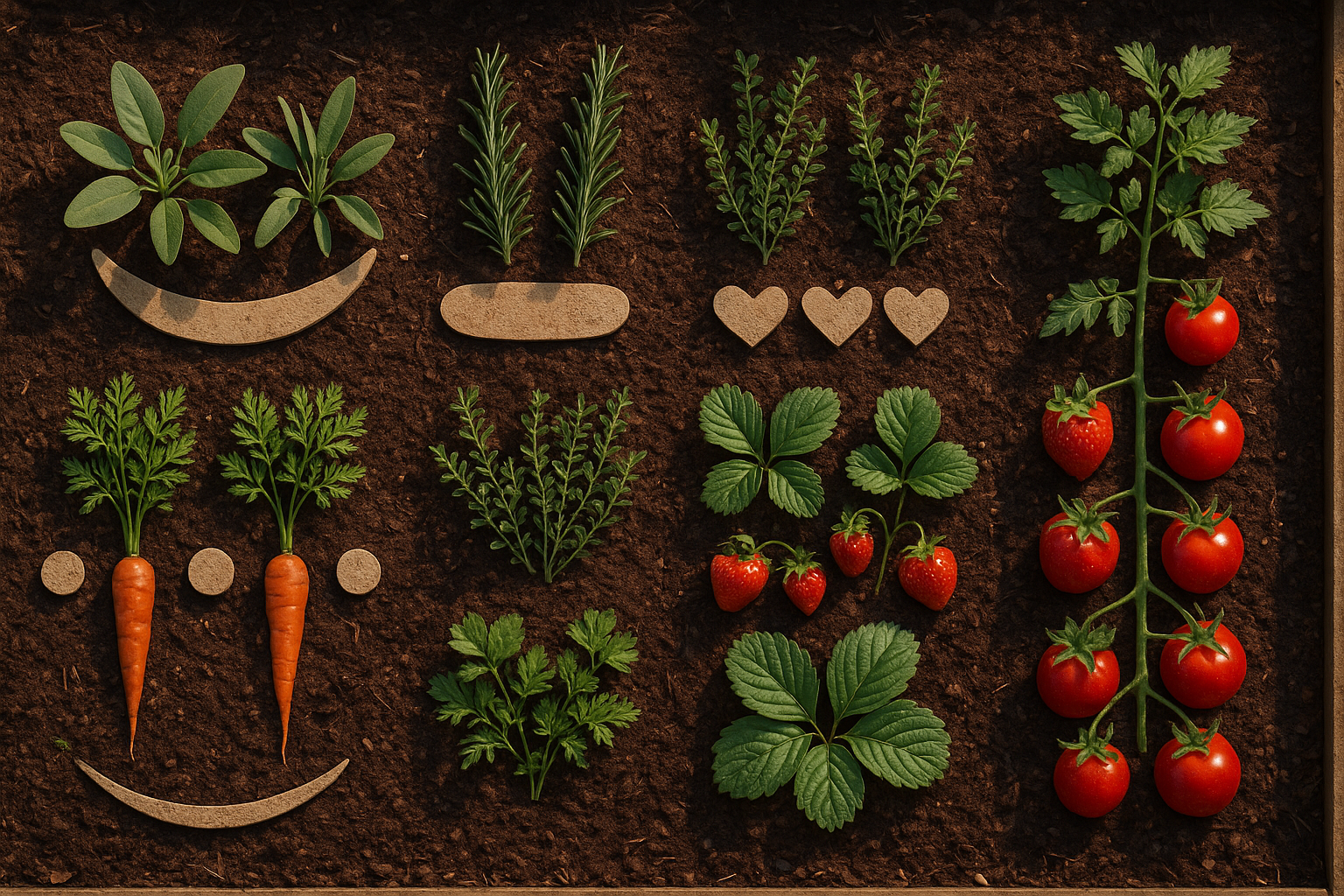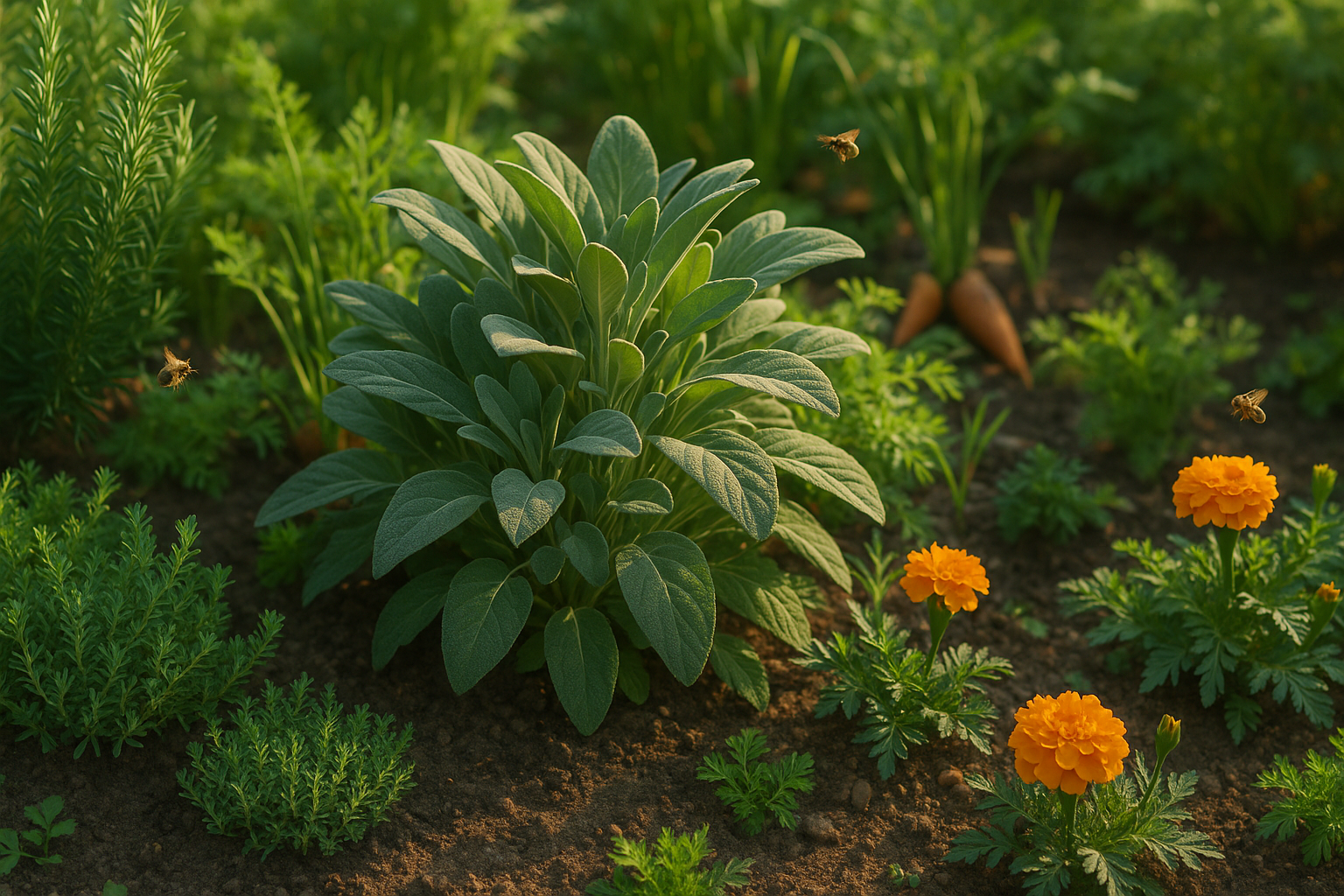Introduction to Sage Companion Planting

Sage companion plants can make a world of difference in your herb garden, especially if you’re aiming for more robust growth, vibrant flavors, and fewer pests. Companion planting is a time-tested gardening method where you strategically grow certain plants together so they help each other thrive—sometimes by attracting beneficial insects, deterring harmful pests, or simply improving how well each plant grows.
For herbal gardeners, sage is a powerhouse: it’s hardy, aromatic, and known for its earthy leaves that elevate both your cooking and your garden’s appeal. Sage loves a sunny spot with well-draining soil and doesn’t require much water, making it perfect for low-maintenance beds or containers.
Pairing sage with the right companion plants brings real benefits. For example, flowers like marigolds can deter sage-loving pests, while vegetables such as carrots or cabbage may enhance each other’s flavors and even improve yields. Neighboring herbs like rosemary and thyme enjoy similar conditions, so they help fill out your herb patch without competing for resources.
With the right planning, integrating sage companion plants can reduce your need for chemical pest control, save you time, and produce a more self-sustaining, flavorful harvest. Imagine harvesting fresh sage knowing it grew better thanks to garden teamwork—this is companion planting in action.
Best Companion Plants for Sage
Pairing sage with the right companion plants not only boosts your garden’s productivity but also enhances plant health and flavor. Rosemary is perhaps sage’s best-known companion, as both herbs thrive in similar dry, sunny conditions and help each other by discouraging certain pests—including cabbage moths and carrot flies—thanks to their aromatic oils.
Planting sage near carrots benefits both: sage repels carrot flies with its strong scent, potentially reducing carrot root damage, while carrots don’t compete for the same soil nutrients. Strawberries and sage make great neighbors as well; traditionally, gardeners plant sage around strawberry beds to ward off slugs and improve berry yield.
For members of the cabbage family (like broccoli, kale, and cauliflower), sage acts as a natural deterrent for cabbage moths and flea beetles, insects notorious for damaging these crops. Intercropping sage with beans also brings mutual benefits—sage’s scent can mask bean plants from bean beetles, while beans fix nitrogen, improving soil fertility and indirectly benefiting sage.
Historically, companion planting techniques like these have been central to organic gardening, reducing the need for chemical sprays by harnessing nature’s defenses. Modern studies support many of these pairings, showing that pest populations drop and yields rise when sage is thoughtfully placed among compatible crops. Mixing and matching these companions can make your garden more resilient, flavorful, and fruitful—all with little extra effort.
Plants to Avoid Growing Near Sage
When planning your herb or vegetable garden, it’s important to know that sage doesn’t get along with every plant. For example, cucumbers tend to struggle when planted near sage. Sage releases certain compounds that can actually stunt cucumber growth, so it’s best to keep them in separate beds or opposite ends of your garden.
Onions are another poor companion; the strong aroma and chemicals released by both plants can lead to competition for nutrients and space, resulting in diminished yields for both. It’s also a good idea to keep sage away from other strong-flavored herbs like basil and rue. Placing them too close together can lead to flavor cross-contamination and may inhibit each other’s growth.
As a useful tip, create clear borders or pathways between sage and these incompatible plants. Raised beds, container gardening, or even simple signage can help you manage this separation. By spacing sage away from cucumbers, onions, and potent herbs, you’ll help each plant thrive and avoid disappointing harvests.
How to Plan and Plant a Sage Companion Garden

Start by choosing a sunny spot in your garden, as sage thrives best with at least six hours of direct sunlight each day. Before planting, prepare well-draining soil by mixing in some compost to boost nutrients—sage prefers slightly dry conditions, so avoid overwatering or planting where water pools.
When laying out your garden, space sage plants about 18 to 24 inches apart to ensure ample airflow and reduce the risk of mildew.
Next, identify ideal companions:
- Sage pairs well with perennials like rosemary and thyme, which share its preference for sun and dry soil, creating a harmonious herb bed you can enjoy year after year.
- For annual companions, consider planting sage near carrots, strawberries, or tomatoes; these vegetables can benefit from sage’s pest-repelling qualities.
Try grouping taller perennials at the back and placing shorter annuals at the front for easy access and to maximize sunlight exposure for all. Rotate your annual companions each season to support soil health and control pests naturally.
Be mindful to avoid pairing sage with cucumbers or rue, as they can hinder each other’s growth.
By planning your layout with spacing, sunlight, and soil in mind, you’ll create a productive, beautiful garden where sage and its companions thrive.
Pest Control and Benefits of Sage in the Garden
Sage is more than just a fragrant herb; it’s a natural powerhouse for pest control in the garden. Its pungent aroma acts as a barrier, confusing and deterring common pests like cabbage moths, carrot flies, flea beetles, and even slugs.
By planting sage near vulnerable crops such as cabbages, carrots, tomatoes, and strawberries, you not only repel pests directly from the sage but also create a protective shield for your other plants. For example, cabbage moths are less likely to lay their eggs where sage is abundant, while carrot flies tend to avoid areas dominated by this herb’s scent.
To maximize sage’s repellent properties, consider these tips:
- Plant sage along garden borders or intersperse it between rows of vegetables.
- Clip sage leaves and scatter them around vulnerable plants.
- Make a simple sage spray by soaking leaves in water overnight, then misting it on your plants’ foliage.
As an added bonus, sage attracts beneficial insects like bees, which help pollinate your crops while keeping harmful pests at bay. These easy methods make sage a low-maintenance, eco-friendly solution for gardeners wanting to keep their harvests healthy and chemical-free.
Harvesting and Caring for Sage in Companion Planting Setups
Caring for sage in a companion planting setup means keeping your sage healthy while also respecting the needs of neighboring plants. Sage loves well-drained soil and plenty of sunlight, so make sure surrounding plants—like carrots, strawberries, or tomatoes—won’t shade it out.
Water sage sparingly, since it tolerates drought better than most companions, and excessive moisture can encourage disease. For harvesting, use sharp scissors to snip individual leaves or sprigs from the outer part of the plant, being careful not to brush against nearby herbs or veggies, which could bruise tender shoots.
Always avoid cutting more than one-third of your sage plant at a time to encourage vigorous regrowth without stressing the plant. Regularly remove any yellow or damaged leaves, gently weed around the sage to reduce competition, and check for pests like aphids or spider mites. These simple steps keep sage thriving and your whole garden healthier.
Common Sage Companion Planting Mistakes to Avoid
One frequent mistake in sage companion planting is overcrowding the plants, which limits airflow and increases the risk of disease. Always space sage and its companions at least 18 to 24 inches apart for healthier growth.
Another common error is planting sage in soil that’s too moist or heavy. Sage thrives best in well-drained, slightly sandy soil—mix in some coarse sand or gravel if your garden tends to hold water.
Pair sage only with compatible companions like carrots, strawberries, or cabbage, and avoid planting it near herbs that need more water, such as basil, to prevent competition for resources.
Regularly check soil moisture and prune sage to encourage bushiness.
In summary, provide good spacing, select mutually beneficial companions, ensure fast-draining soil, and monitor conditions to maintain a thriving sage companion garden. These simple adjustments can save you frustration and lead to a more productive, aromatic herb bed.
